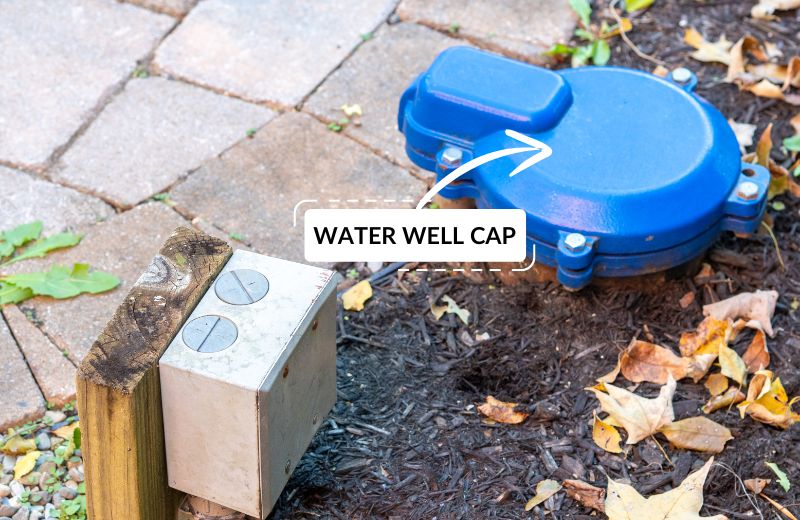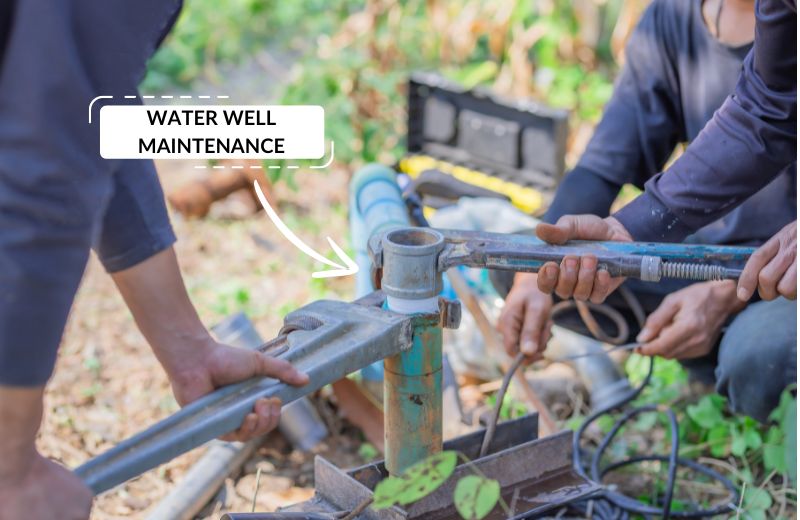Found an old water well on your property? It may be possible to restore the well and use it as your main water supply.
Here, we’ve shared everything to know about what to do with old water wells, including what to do if you don’t want to use the well, and what to do if you intend to use the well for drinking water.
📌 Key Takeaways:
- To find an old well on your property, look for information in land use documents for the property, and assess the property for indications of a well’s presence.
- If you don’t want to use an old water well or you’re concerned about safety, you’ll need to pay to get the well decommissioned and sealed. This is sometimes a legal requirement.
- If you want to restore an old well for use, hire a professional groundwater contractor to assess the well’s structure, test your water, install new components, and build new water lines to deliver the water to your home.
Table of Contents
🔎 How To Find An Old Well
If you move into a property with an old well, you should be aware of this from the get-go. Most states legally require homeowners to provide information about an old or abandoned well to the local government before selling the property.
However, it’s possible that you might not receive this information, or that the previous homeowner wasn’t aware of the well on their property.
To find an old well, here’s what to look for:
- Pipes sticking up from the ground
- Small buildings that look like an old well house
- Depressions or dips in the ground
- Pits or concrete vaults (which might be covered over by lumber or metal plates)
- Out-of-use windmills
- Additions to old homes (wells were commonly constructed under porches and in basements in the past)
You can also obtain documentation regarding the land use on the property. This should indicate the location of an unused well and highlight water sources, even if they’re no longer in use.
Useful documents include:
- Old maps and property blueprints
- Water utility history records
- Property title documents
- Information in local well logs

1️⃣ What To Do With An Old Well You Don’t Want To Use
Some out-of-service wells are no longer in use for a specific reason. The well might have dried up, or it might pose potential safety hazards or a major contamination risk.
If you don’t want to use an old well, hire a professional to decommission and seal your well. Only well contractors should decommission a well – never attempt to do it yourself.
In some states, ensuring that old water wells are properly sealed is a legal requirement. Sealing your well will protect groundwater contamination and prevent the water from seeping upwards.
Follow these steps:
- Test the water. It’s a good idea to test your water for contaminants before moving on to the next steps. You can inform workers of any contaminants detected.
- Get the well inspected. A well contractor will inspect the well and determine whether it poses a physical safety hazard.
- Seal the well. Hire a professional to fill the well length with a special sealing material, usually cement-bentonite grout. Bentonite clay chips may also be used. It’s usually not recommended to use straight Portland cement because cement shrinks while it’s curing, which prevents the well from being sealed properly, allowing water to pass through gaps and very small fractures.
- Notify your local authority. In some states, property owners will be required to inform their local Department of Environmental Protection branch of the well sealing and closure.
Leave the bulk of the job to the experts. Licensed well contractors are trained and knowledgeable in well decommissioning, and have the proper equipment to safely carry out the sealing work. Plus, they’re aware of local well decommissioning code requirements.
On the other end, you probably don’t know your local regulations, and could get injured falling into the abandoned well or taking on a job that’s too extensive for the everyday handyman.

2️⃣ What To Do With An Old Well You Intend To Use
If you want to use an old well as your main water supply, it may be possible to revive the well for this purpose.
Most of the steps you’ll need to take should be carried out by a certified professional.
Here’s what to do:
- Get the water tested. First, you need to find out about the well’s water quality. Purchase a laboratory water quality test that detects all the most common well water contaminants. For legal reasons, you might need to get a professional contractor to do this for you.
- Inspect the well. Hire a contractor to inspect your well’s structure and note any structural concerns.
- Repair the well. You might need to repair the well before it can be used. This could include sealing cracks, removing foliage and debris, and repairing water pumps. Again, a licensed contractor should carry out the bulk of the tasks since they’ll have the construction equipment and obtain the permits required to take on the work.
- Modernize the well. An old well might need modernizing by replacing old water supply pipes made from dangerous materials (typically lead), replacing or adding a new well pump, and plumbing the well more effectively to your home.
In some cases, you might be unable to use an out-of-service well – and there’s not much you can do about it.
For instance, testing of the well water may uncover a serious contamination issue, such as gasoline, fertilizers, other chemicals, or heavy metals, which may be difficult to remedy even with extensive water cleaning and filtration.
The area near the well may have also been subject to hazardous land use. For instance, abandoned dug wells might be affected by surface runoff from waste from dumps, stables, chicken houses, and so on. The waste could flow straight down into the well aquifer, causing significant contamination.
This is more common in shallow wells than wells with deep aquifers.

📑 Final Word
Not all out-of-service wells will be suitable for use. Remember, many unused wells are unused for a reason.
If you’ve discovered an old well on your property, the best thing to do is conduct water testing (if the well still draws water) and hire a professional well contractor to inspect the well’s structure on your behalf.
If you are able to successfully restore a well, you’ll need to ensure the well is correctly maintained throughout your ownership, protecting it from pollution, damage, and contaminants that threaten operating wells.
Proper water well maintenance includes annual servicing, utility water testing, and replacing and repairing components of the well when necessary.


Wow! I love how you talked about the importance of quality testing before utilizing old water wells. A friend of mine stumbled upon an abandoned well near his aunt’s house in New York the other day. I bet he might want to find a contractor to check on it.
Well water testing is essential! Is this well your friend stumbled upon on their aunt’s property?
Hello my Hannah’s and I purchased property and it has a large well. Probably 3×3 foot opening. The inside is stone or skate (flat rocks). Hire can we find out how old it is? Still has water about 15 ft down. Thanks
Hey Jamie, great question. Have you asked for well records from the previous property owner? This would be the first place to start